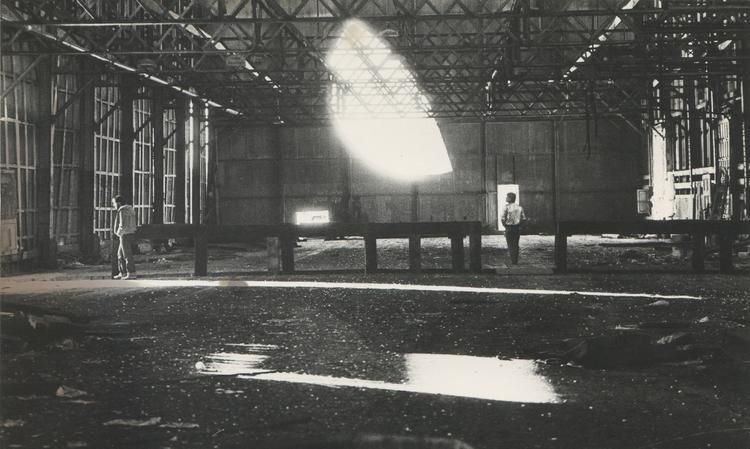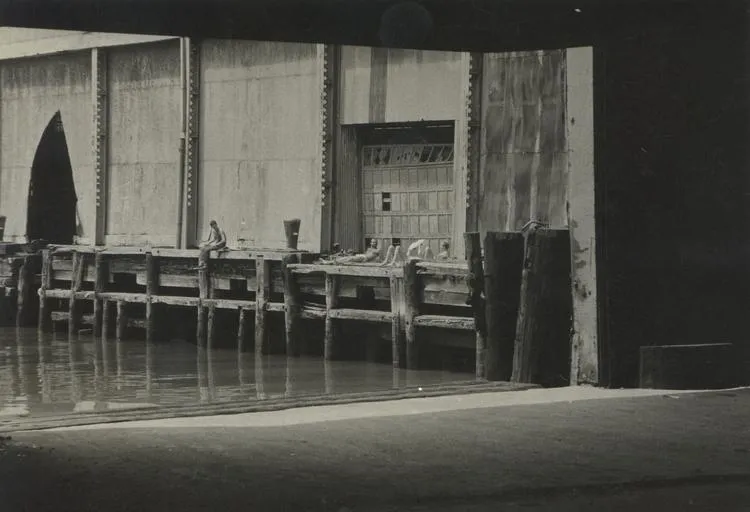Bronx Exhibition Spotlights Alvin Baltrop, Photographer Who Documented Manhattan’s Underground Queer Community
Baltrop took thousands of snapshots at New York’s West Side Piers between 1975 and 1986
/https://tf-cmsv2-smithsonianmag-media.s3.amazonaws.com/filer/b0/29/b029c6bb-86a7-478a-acd8-808509f6b2ae/marsh___baltrop_3001.jpg)
In the decade or so between the Stonewall Uprising and the beginning of the AIDS epidemic, Bronx-born photographer Alvin Baltrop documented life in the underground gay community of New York City’s West Side Piers through a voyeuristic, intensely intimate lens.
That body of work, stretching 11 years, is simultaneously sensual and spiritual, unmatched in its depiction of the sunbathers, sailors, sex workers and strangers who frequented the waterfront and its derelict warehouses during the 1970s. While Baltrop’s oeuvre has long been overlooked, an ongoing exhibition at the Bronx Museum of the Arts is poised to finally provide the artist with an overdue dose of recognition.
Titled The Life and Times of Alvin Baltrop, the show features more than 200 photographs drawn from the museum’s holdings and private collections. Per a press release, the presentation also includes never-before-seen works from Baltrop’s personal archives.
As Emma Grillo writes for Interview magazine, the West Side Piers emerged as a fringe hub for gay men and experimental artists following a 1973 highway collapse that left the neighborhood cut off from the rest of Manhattan. Today, the area is home to the Whitney Museum of American Art and upscale entertainment venues, but during the 1970s and ’80s, it was a hotbed for drug smuggling and prostitution. At the same time, i-D’s André-Naquian Wheeler notes, the piers acted as “safe havens for gay men who wanted to meet, hook up, and then go their separate ways.”

Baltrop’s association with the flourishing underground network began shortly after his return from the Vietnam War. Born in the Bronx in 1948, the African-American photographer served in the Navy before shifting gears to study art in the city. Between 1975 and 1986, he took thousands of snapshots at the piers, including images of sunbathers, homeless people and individuals photographed mid tryst. Perhaps his best-known photograph is a portrait of transgender activist Marsha P. Johnson, who played a prominent part in the Stonewall Uprising and is due to be featured in a planned NYC monument.
Compared with better-known contemporaries like Robert Mapplethorpe, Peter Hujar and Gordon Matta-Clark, Baltrop has attracted relatively little critical attention. Prior to his death in 2004, he was featured in just a few exhibitions—one was held at a gay night club—and it was only in 2008 that an article by Artforum critic Douglas Crimp brought his work mainstream attention.

Speaking with the Guardian’s Nadja Sayej, exhibition curator Sergio Bessa says that Baltrop viewed photography as more of a passion than a career. To make ends meet, he worked odd jobs such as designing jewelry, selling goods on the street and driving a cab. Ultimately, Artforum notes, the photographer quit his main job as a taxi driver to spend more time pursuing his craft; working as a self-employed mover, he often spent days on end at the piers, taking snapshots and living out of his van. In time, he came to care for the homeless men who lived at the piers after they were forced to leave their homes. “He got young men to test for STDs and gave them relationship advice. He had this caring side of him,” Bessa tells the Guardian’s Sayej.
In the preface to an unfinished volume of his pier photographs, Baltrop confessed that at first, he had been terrified of the piers. Then he began documenting what he saw. “I soon grew determined,” he stated, “to preserve the frightening, mad, unbelievable, violent, and beautiful things that were going on at that time.”
The Life and Times of Alvin Baltrop is on view at the Bronx Museum of the Arts in New York through February 9, 2020.
/https://tf-cmsv2-smithsonianmag-media.s3.amazonaws.com/accounts/headshot/mellon.png)
/https://tf-cmsv2-smithsonianmag-media.s3.amazonaws.com/accounts/headshot/mellon.png)